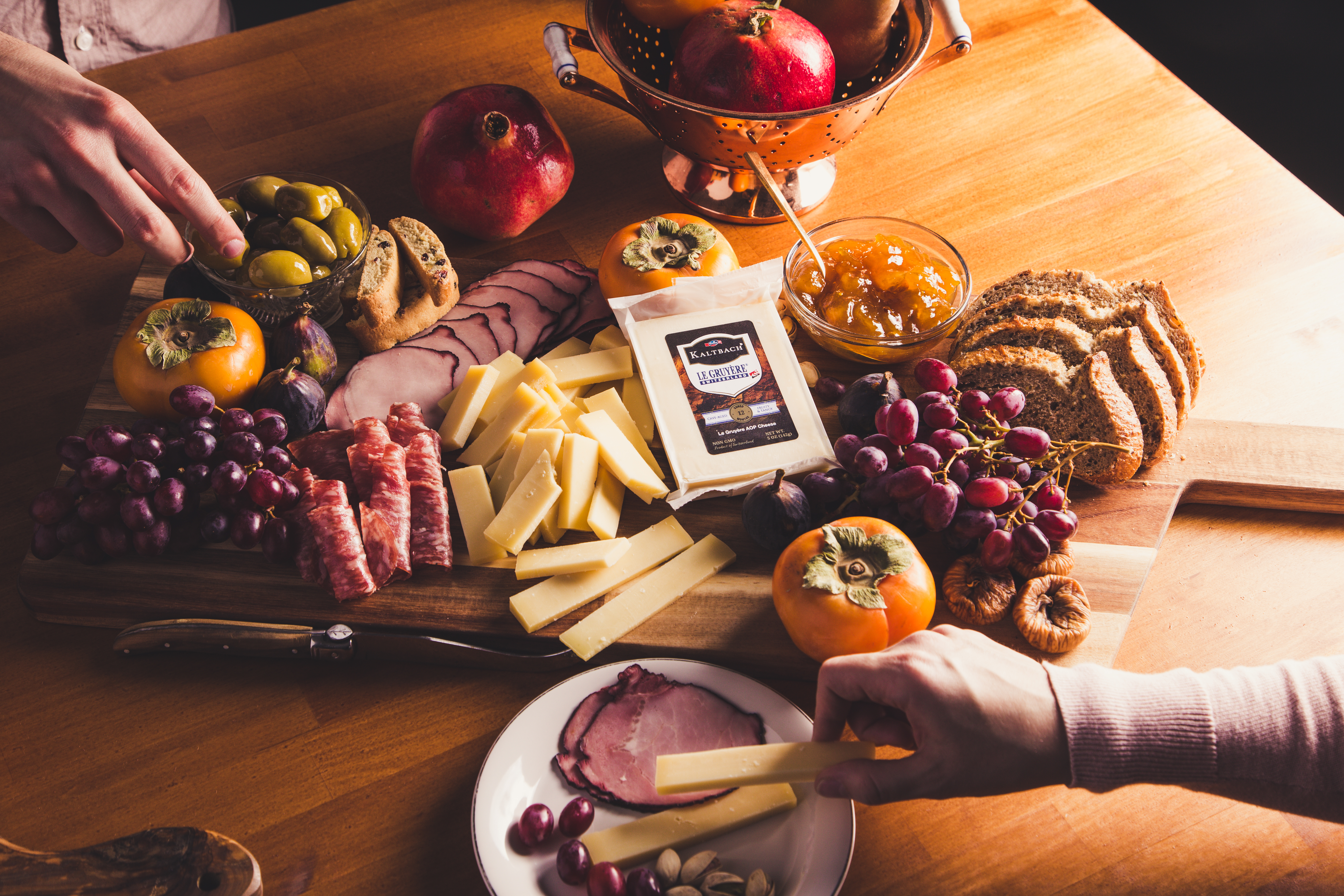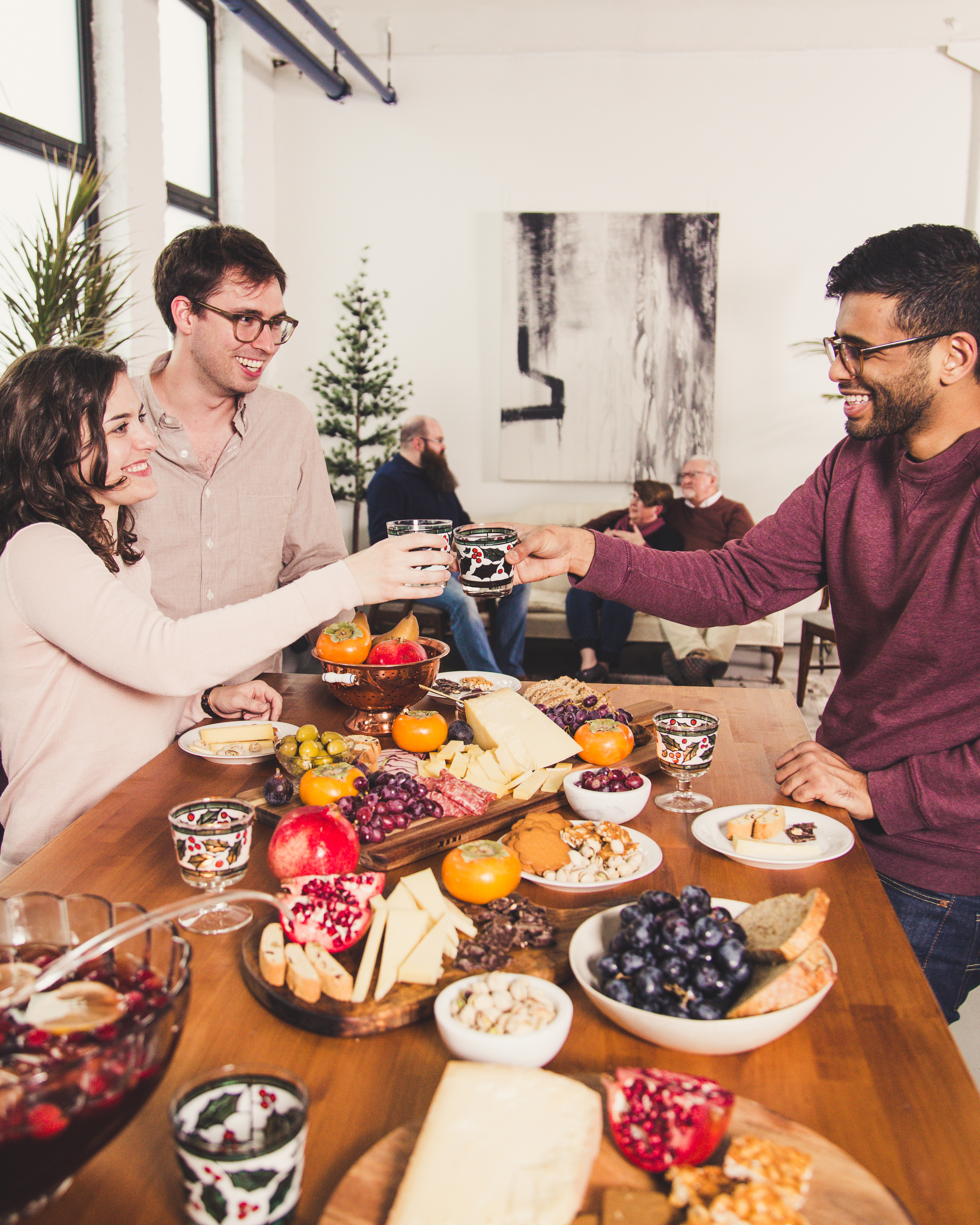Holiday Pairings with Kaltbach Le Gruyère AOP
Good things do indeed come to those who wait. After at least one year aging under the watchful café of the Kaltbach Master Affineur in the legendary caves, Kaltbach Le Gruyère AOP makes its way onto tables around the world. With its flavors of dried stone fruit, spice, black tea and hazelnuts, it’s the perfect cheese to feature on a holiday cheese board.
Kaltbach Le Gruyère AOP lends itself beautifully to both sweet and savory pairings, as well as a festive holiday punch (read on for the recipe).

It’s hard to go wrong sweet pairings to accentuate this versatile cheese that delights a wide range of palates. Choose a selection of accompaniments that add color as well as complementary flavors to your cheese board. For the holidays, we reach for deeply colored black grapes, fresh persimmons whenever they’re available, dried figs and a beautifully made jam. Cherry jam is a wonderful complement to the cheese, and if golden plum jam is available in your market, it makes for an extra special holiday treat. Finish your sweet pairings with a cookie – it is the holidays, after all! Ginger snaps, almond cookies or cranberry biscotti are all great choices.
On the savory side, there are many great options, as well. Hearty, rustic bread is a must, as are briny, buttery olives. Charcuterie is another wonderful pair with many possibilities. For our holiday board, we chose double smoked Canadian bacon (ham works wonderfully, too) and peppery soppressata.

It wouldn’t be the holidays without a cup of cheer, so don’t forget to include a festive beverage pairing or two. If you’re serving wine, choose a Cabernet Franc, red or white Burgundy, Grenache or Syrah to complement the Kaltbach Le Gruyère AOP cheese. Single malt Scotch also highlights the flavors of the cheese quite nicely. If a holiday punch is more your style, we have just the recipe to accentuate your beautiful cheese board, made with sparkling pear cider, ginger kombucha, port wine and club soda. Get the recipe below.
For something non-alcoholic, ginger kombucha and non-alcoholic pear cider are both great options. Whatever your beverage of choice, raise a glass to friends, family and good food, and have a wonderful holiday season!
Ginger Pear & Port Punch
1 bottle (750 ml) ruby port wine
1 bottle (16 ounces) ginger kombucha
1 bottle (750 ml) pear cider
1 pear, sliced
1 liter club soda
1 cup frozen cranberries (optional)
In punch bowl, combine port wine, kombucha and pear cider; mix. Top with ice and club soda to taste. Garnish with sliced pears and frozen cranberries.
